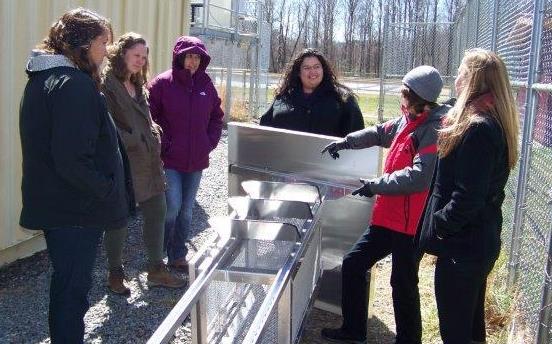Instruction Guide and Macro Analysis Tool for Community-led Air Monitoring
 EPA and partners from the Eastern Band of Cherokee Indians review the assembly of a weather shelter for low-cost sensors.
EPA and partners from the Eastern Band of Cherokee Indians review the assembly of a weather shelter for low-cost sensors.
EPA has developed two tools for evaluating the performance of low-cost sensors and interpreting the data they collect to help citizen scientists, communities, and professionals learn about local air quality.
Instruction Guide
EPA's Instruction Guide helps users conduct a successful collocation evaluation of low-cost air sensors. Collocation refers to the process of operating a regulatory grade reference monitor (FRM/FEM) and non-reference monitor (low-cost sensor) at the same time and location under real-world conditions for a defined evaluation period. Collocating low-cost sensors with regulatory monitors can help users evaluate the performance of their sensors and the accuracy of their data. The Instruction Guide contains links to web-based supporting materials and introduces users to the Macro Analysis Tool.
Macro Analysis Tool
EPA's Excel-based Macro Analysis Tool helps users compare data from low-cost sensors to data from regulatory monitors, and interpret their results. The tool allows input of data from low-cost and regulatory monitors for comparison, even if measurements weren’t recorded at precisely the same time, or were collected at different time intervals, such as 1-minute versus 5-minute intervals. This tool addresses one of the major hurdles in citizen-led community air monitoring projects, which is working with and understanding the data.
What are the benefits of using the Guide and Analysis Tool?
Low-cost sensors make it possible for citizens to collect air quality data in their own communities, but they still require instruction for optimal results. While low-cost sensors can measure many of the same air pollutants that costlier regulatory monitors measure, they aren’t required to meet the same rigorous standards of accuracy and reliability. Understanding how to collocate low-cost sensors with regulatory monitors and compare their results ensures that data from the low-cost monitors is on par with federal standards.
Who should use these tools?
While EPA developed each of these tools to be suitable for citizen scientists and communities, they are also useful to the broader air sensor user community, both experts and non-experts. Furthermore, the Macro Analysis Tool can be used to compare datasets beyond the specific collocation application it was designed for, such as comparing data from one low-cost sensor to another.
How were these tools developed?
The tools were developed as part of a community-led air sensor evaluation project that began during fall 2016 in support of EPA’s emerging technologies research program. During the year-long project, EPA partnered with one community group (Clean Air Carolina) and one tribal nation (Eastern Band of Cherokee Indians) to conduct a sensor performance evaluation using their choice of low-cost sensors. Both project partner groups used the tools and gave feedback on how to better tailor them for citizen users.
